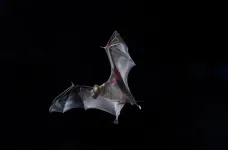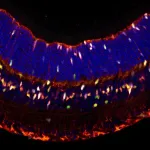(Press-News.org)
Contact: Bess Connolly, 203-432-1324 or elizabeth.connolly@yale.edu
New Haven, Conn. — A Yale-led study warns that global climate change may have a devastating effect on butterflies, turning their species-rich, mountain habitats from refuges into traps.
Think of it as the “butterfly effect” — the idea that something as small as the flapping of a butterfly’s wings can eventually lead to a major event such as a hurricane — in reverse.
The new study, published in the journal Nature Ecology and Evolution, also suggests that a lack of comprehensive global data about insects may leave conservationists and policymakers ill-prepared to mitigate biodiversity loss from climate change for a wide range of insect species.
For the study, a team co-led by Yale ecologist Walter Jetz analyzed phylogenetic and geographic range data for more than 12,000 butterfly species worldwide. The team was also co-led by Stefan Pinkert, an entomologist at the University of Marburg, in Germany, and former postdoctoral associate at Yale.
They found that butterfly diversity is highly clustered in tropical and subtropical mountain systems: two-thirds of butterfly species live primarily in the mountains, which contain 3 1/2 times more butterfly hotspots than lowlands.
Yet those mountain ecosystems — and surrounding areas — are quickly changing as a result of climate change. According to the study, 64% of the temperature niche space of butterflies in tropical areas will erode by 2070, with the geographically restricted temperature conditions of mountains constantly shrinking.
“The diversity, elegance, and sheer beauty of butterflies impassion people worldwide,” said Jetz, professor of ecology and evolutionary biology in Yale’s Faculty of Arts and Sciences and director of the Yale Center for Biodiversity and Global Change (BGC Center).
“Co-evolved with host plants, butterflies form an integral part of an ecologically functioning web of life,” he added. “Unfortunately, our first global assessment of butterfly diversity and threats finds that butterflies’ fascinating diversification into higher-elevation environments might now spell their demise, with potentially thousands of species committed to extinction from global warming this century.”
Pinkert, a former postdoctoral researcher at the BGC Center, added: “As an entomologist, I am committed to informing the public about the distribution of insect diversity and targeted ways to protect it. Our results are insightful from an ecological point of view but unfortunately also very alarming.”
Current priorities in biodiversity preservation, the researchers note, are geared to animals and plants, rather than insects. Until now, a global assessment of the geographic coincidence of diversity, rarity, and climate change threats for an insect system did not exist.
The new assessment reveals that patterns in butterfly diversity differ strongly from those of much better studied groups such as birds, mammals, and amphibians — challenging the relevance of existing conservation priorities, the researchers said.
“This research was made possible by many years of mobilizing various global data and newly developed integrative approaches, all aimed at filling this critical information gap for at least one insect taxon,” Pinkert said.
Jetz said he hoped the new study — and future research enabled by the Map of Life, a global database, directed by Jetz, that tracks the distribution of known species worldwide — will support conservation managers to include insects in their plans for biodiversity preservation.
“A reduction of carbon emissions, combined with proactive identification and preservation of key butterfly habitats and migratory corridors, will be key to ensuring that much of butterfly diversity survives to benefit future generations,” Jetz said.
Co-authors of the study are Nina Farwig of the University of Marburg and Akito Kawahara of the University of Florida.
The research was supported, in part, by the Alexander von Humboldt Foundation, the Gordon and Betty Moore Foundation, the National Science Foundation, and the E.O. Wilson Biodiversity Foundation.
To explore more of the results of the research at the Map of Life site, visit here.
# # #
END
Aya Goldshtein, Omer Mazar, and Yossi Yovel have spent many evenings standing outside bat caves. Even so, seeing thousands of bats erupting out of a cave and flapping into the night, sometimes in densities so high that they appear liquid, astounds the scientists every time. But until recently, the bat biologists were even more baffled by what they didn’t see. “The bats don’t run into each other,” says Goldshtein from the Max Planck Institute of Animal Behavior, “even in colonies of ...
The same genes could hold the key to regenerating cells in the ear and eye, according to a new mouse study from the USC Stem Cell laboratory of Ksenia Gnedeva, PhD, published in the Proceedings of the National Academy of Sciences (PNAS).
“The proliferation of progenitor cells in response to injury is a crucial step in the regeneration of sensory receptors, but this process is blocked in the mammalian inner ear and retina. By understanding the genes that enforce this block, we can advance efforts to restore hearing and vision in patients,” said Gnedeva, an assistant professor in the USC Tina and Rick Caruso Department of Otolaryngology ...
A new study published in Proceedings of the National Academy of Sciences (PNAS) has turned traditional thinking on its head by highlighting the role of human interactions during the shift from hunting and gathering to farming - one of the biggest changes in human history - rather than earlier ideas that focused on environmental factors.
The transition from a hunter-gatherer foraging lifestyle, which humanity had followed for hundreds of thousands of years, to a settled farming one about 12,000 years ago has been widely discussed in popular books like Sapiens: A Brief History of Humankind by Yuval Noah Harari.
Researchers from the University of Bath, the Max Planck Institute ...
International scientists have uncovered the oldest known phosphatic stromatoporoid sponge, dating back approximately 480 million years to the Early Ordovician, in South China.
Stromatoporoid sponges were key reef builders during the Palaeozoic era, playing a crucial role in constructing biological frameworks—similar to the role of modern corals. They were especially important during the middle Paleozoic era (from the late Middle Ordovician to Devonian), a time marked by a major transition from microbial-dominated to skeletal-dominated reef ecosystems. Previously, stromatoporoid ...
New York, NY [March 31, 2025] — Brian Brown, PhD, Director of the Icahn Genomics Institute at the Icahn School of Medicine at Mount Sinai, has been elected to the College of Fellows of the American Institute for Medical and Biological Engineering (AIMBE). He was honored for his seminal work in gene therapy and functional genomics, which has helped transform the fields and contributed to key advancements in medicine and biotechnology.
Election to the AIMBE College of Fellows is one of the highest professional distinctions in the field. It recognizes the ...
Mental health care can be difficult to access in the U.S. Insurance coverage is spotty and there aren’t enough mental health professionals to cover the nation’s need, leading to long waits and costly care.
Enter artificial intelligence (AI).
AI mental health apps, ranging from mood trackers to chatbots that mimic human therapists, are proliferating on the market. While they may offer a cheap and accessible way to fill the gaps in our system, there are ethical concerns about overreliance on ...
Rice University researchers have developed an innovative solution to a pressing environmental challenge: removing and destroying per- and polyfluoroalkyl substances (PFAS), commonly called “forever chemicals.” A study led byJames Tour, the T.T. and W.F. Chao Professor of Chemistry and professor of materials science and nanoengineering, and graduate student Phelecia Scotland unveils a method that not only eliminates PFAS from water systems but also transforms waste into high-value graphene, offering a cost-effective and sustainable approach to environmental remediation. This research was published March 31 in Nature Water.
PFAS ...
Lack of sleep and stress hinder athletic performance, but some athletes may be better at performing competitively despite sleep issues and stress. In a new JNeurosci paper, researchers led by Yan Sun, from Peking University, looked for predictive behavioral and neural markers in athletes who maintain their performance level following sleep deprivation and under stress.
The researchers assessed college and professional athletes’ stress levels and cognitive changes after 24 h of sleep deprivation, then followed their ...
The comorbidity of binge eating and alcohol binge drinking is prevalent and increases the risk of other neuropsychiatric and bodily conditions. However, the mechanisms linking these forms of binge consumption are unclear. To explore the link between binge eating and binge drinking alcohol, Karen Szumlinski, from the University of California, Santa Barbara, and colleagues developed a way to model the disease comorbidity in mice. As reported in their JNeurosci paper, this mouse model led to the discovery that females with a history of binge eating start binge drinking ...
People breathing contaminated air over the course of years are at greater risk of developing numerous diseases. This is thought to be due to highly reactive components in particulate matter, which affect biological processes in the body. However, researchers from the University of Basel, Switzerland, have now shown that precisely these components disappear within hours and that previous measurements therefore completely underestimate the quantities in which they are present.
From chronic respiratory problems to cardiovascular diseases, ...


